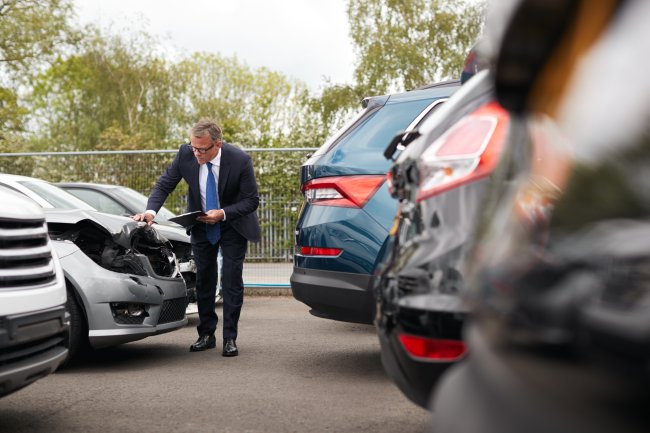Staying on Budget During Salvage Car Restoration
Car restoration projects can easily go over budget, but there are several ways to prevent this from happening. From choosing the right vehicle to finding affordable parts, keeping track of expenses, and doing as much work as possible on your own, there are several ways to stay on budget during your restoration project.

Revving up for a car restoration project? Well, before you burn rubber, make sure to pump the brakes and create a budget. Trust us, it's much better to slow down and plan ahead than to run out of gas halfway through your project. But, it's not just about creating a budget. Sticking to it is another thing entirely. Unexpected issues and high costs can easily cause your car budget to shoot through the roof. So, how can you stay on budget during your restoration project? Keep reading to find out.
Choosing Your Ideal Vehicle
First things first, you need to find the right vehicle for your project. Sure, technically you can restore any vehicle, but that doesn't mean every car is worth restoring. If the vehicle is in incredibly poor condition, you may want to consider finding one in better shape. While a low price tag may make a vehicle attractive, you need to consider the costs involved with restoring it. Vehicles with extensive rust, water damage, missing components, or other issues aren't very practical from a financial standpoint. So, make sure to choose a project vehicle in better condition that won't require quite as much time and money to become roadworthy.
MORE: Affordable Salvage Cars, Trucks, SUVs, and PickUps For Sale
Plan Additional Expenses
Next, plan for additional expenses. When creating your budget, leave a significant amount of room for unexpected expenses. There are always unknowns during a restoration project that come with a lofty price tag, so give yourself some wiggle room. Depending on the size of your project, you should include a cushion of a few hundred or a few thousand dollars to go toward any costly surprises. This will help prevent you from abandoning or significantly delaying the completion of your restoration because you ran out of funds halfway through.
MORE: Reviving Salvage Cars: Essential Tips for a Successful Restoration Project
Honest Evaluation of Your Skill Set
Now, it's time, to be honest with yourself about your skill set. To stay on budget, you need to have a good understanding of your ability to repair cars. If you've never restored a car before, expecting to conduct every single repair yourself isn't realistic. So, leave some room in the budget to hire a professional mechanic to conduct more challenging repairs. Overestimating your skills is one of the main reasons why many ambitious people end up spending way more than they expected.
Spend Your Money on Parts Wisely
When working on a project that requires replacing parts, it's important to consider all options for finding the right parts at an affordable price. Salvage vehicles can be a great source of less expensive parts that are still in good condition.
One way to find these salvage parts is to search online marketplaces such as eBay or car-part.com. These platforms offer a wide selection of used parts from salvage yards and individuals, allowing you to compare prices and find the best deals.
Another advantage of purchasing salvage parts is that they are often OEM (original equipment manufacturer) parts, meaning they were manufactured by the same company as the original part in your vehicle. This ensures a better fit and compatibility with your vehicle.
However, it's important to exercise caution when purchasing salvage parts. Be sure to carefully inspect the parts and ask questions about their condition and history before making a purchase. Additionally, make sure the salvage yard or seller has a good reputation and offers a warranty or return policy.
By considering salvage parts and utilizing online marketplaces, you can save a significant amount of money on your project while still obtaining high-quality parts.
Keep a Record of Your Expenditures
To stay on budget, you will need to keep track of how much you're spending. Keep a folder or binder of any receipts for new parts or repair services, and write a list of every expense you incur throughout the process. If you notice that you're on track to exceed your budget, it's time to stop and reassess your plans.
MORE: How to Obtain a Rebuilt Title for a Salvage Vehicle in New York
Maximize DIY Efforts to Save Money
Lastly, try to complete as much work as possible on your own. Thoroughly cleaning the internal and external components of your vehicle doesn't require a significant amount of skill, but it can be time-consuming and costly if you outsource the job to someone else. So, roll up your sleeves and get to work! And, if you're looking for the perfect vehicle for your restoration project, BidGoDrive can help you find an amazing car at an incredible price. Shop our extensive collection of repairable salvage cars today!













